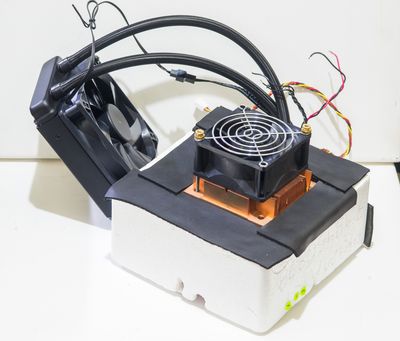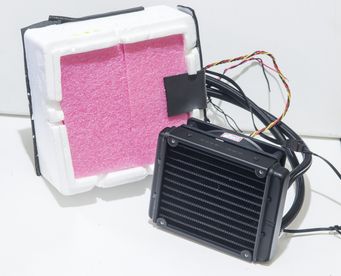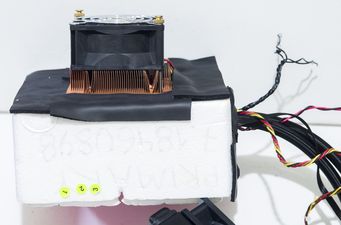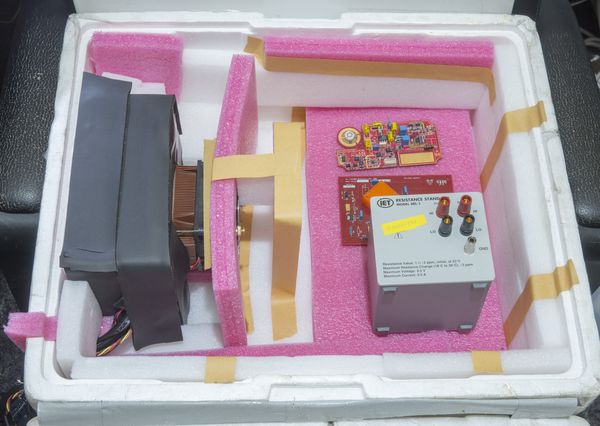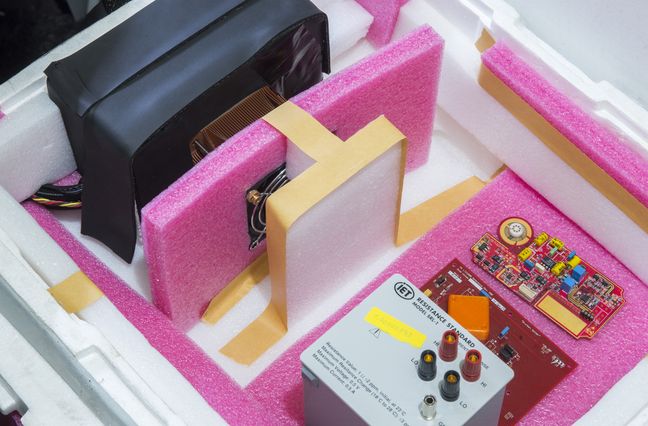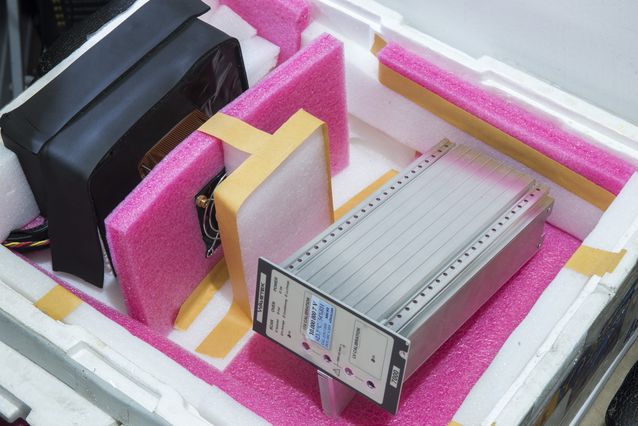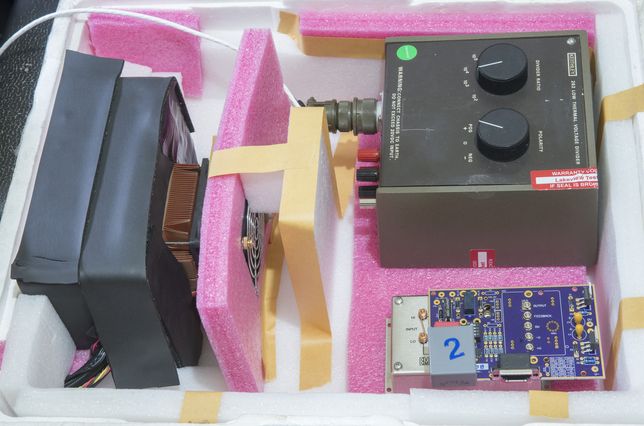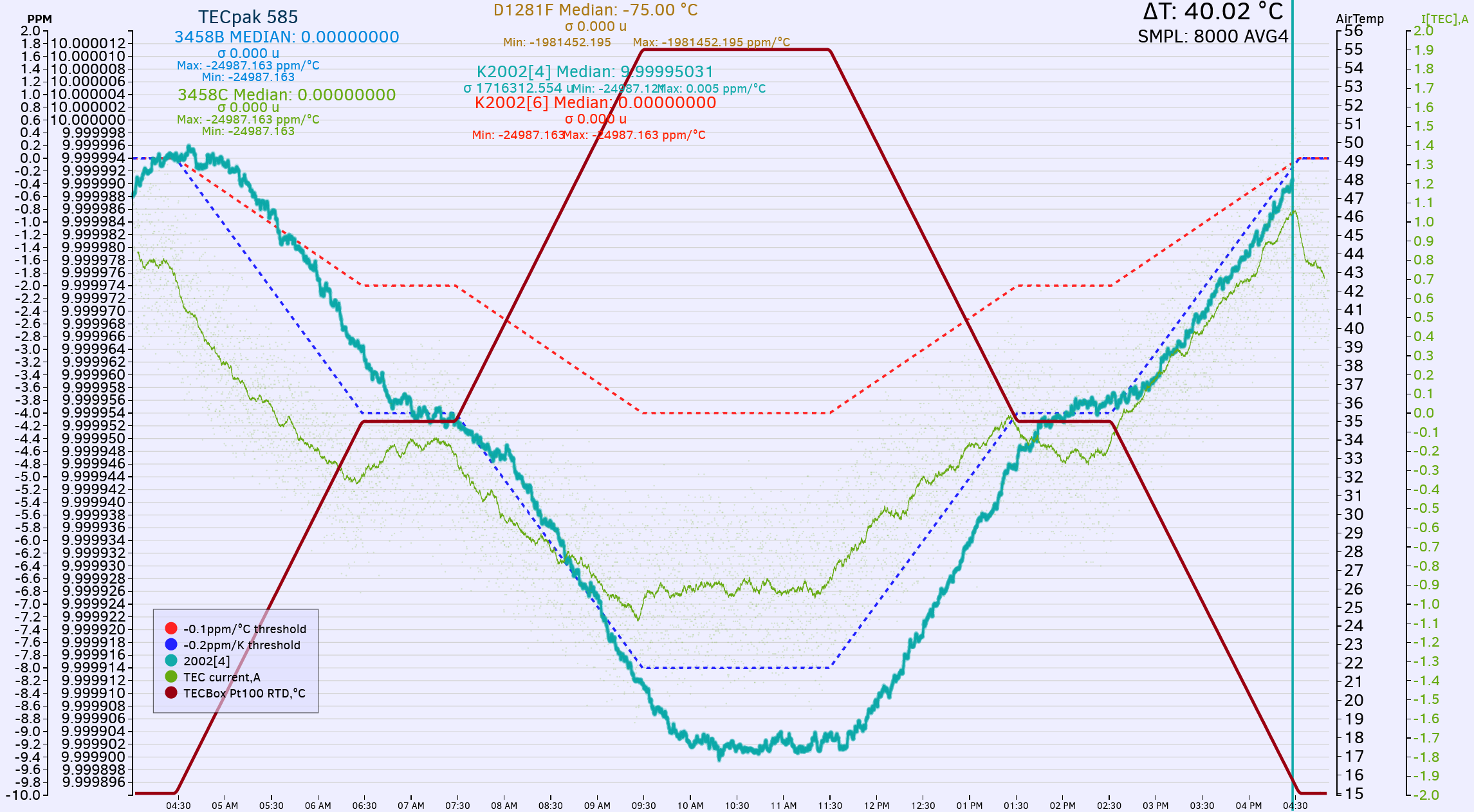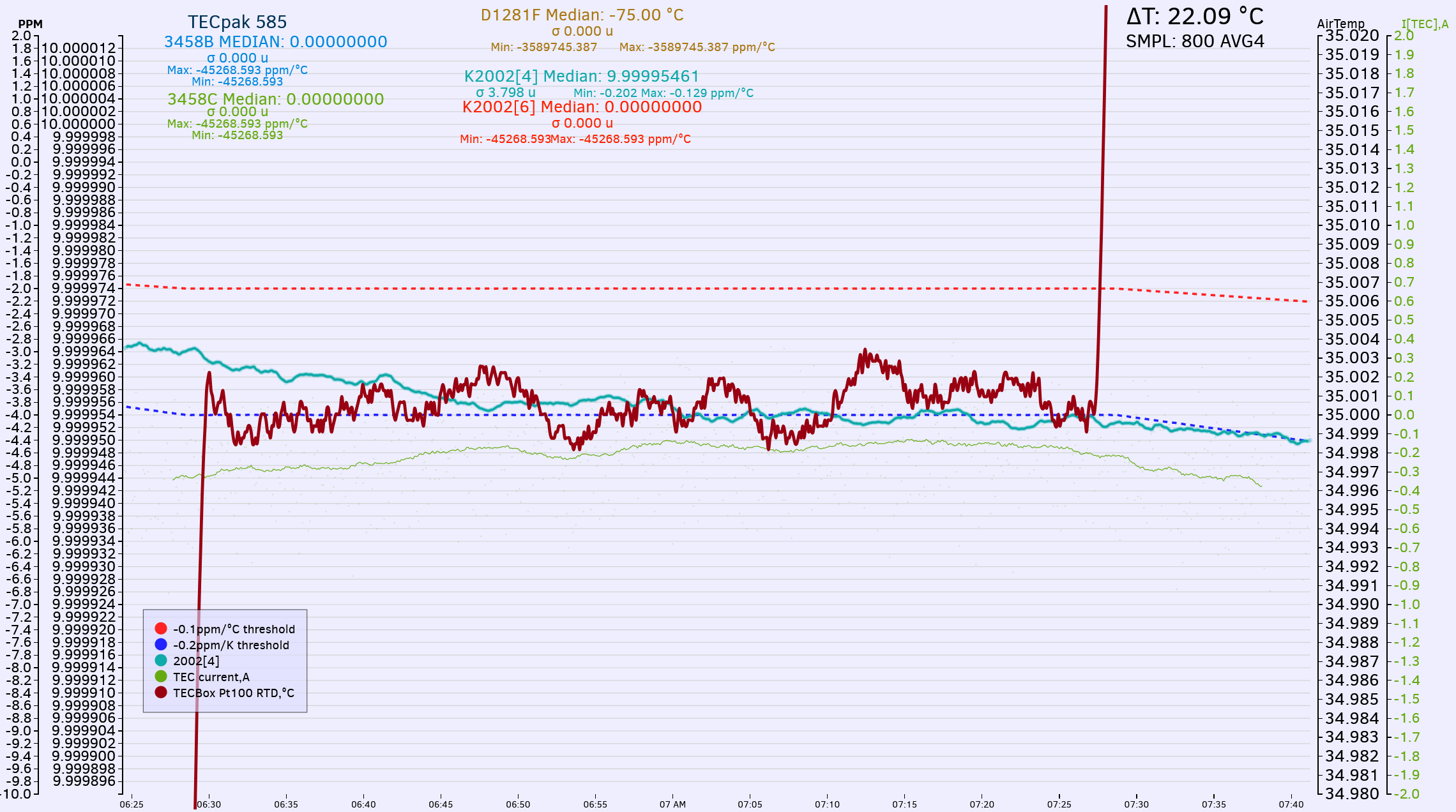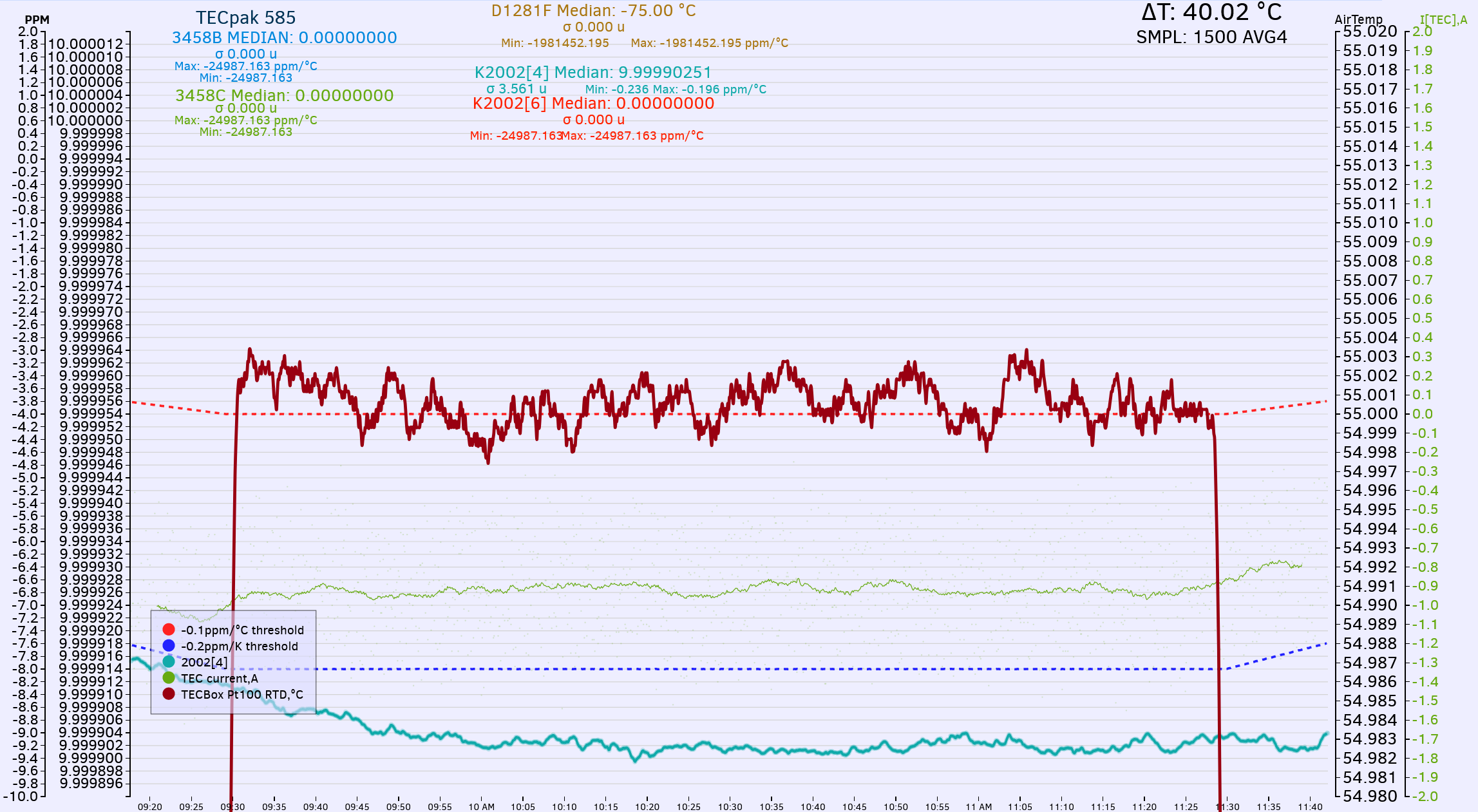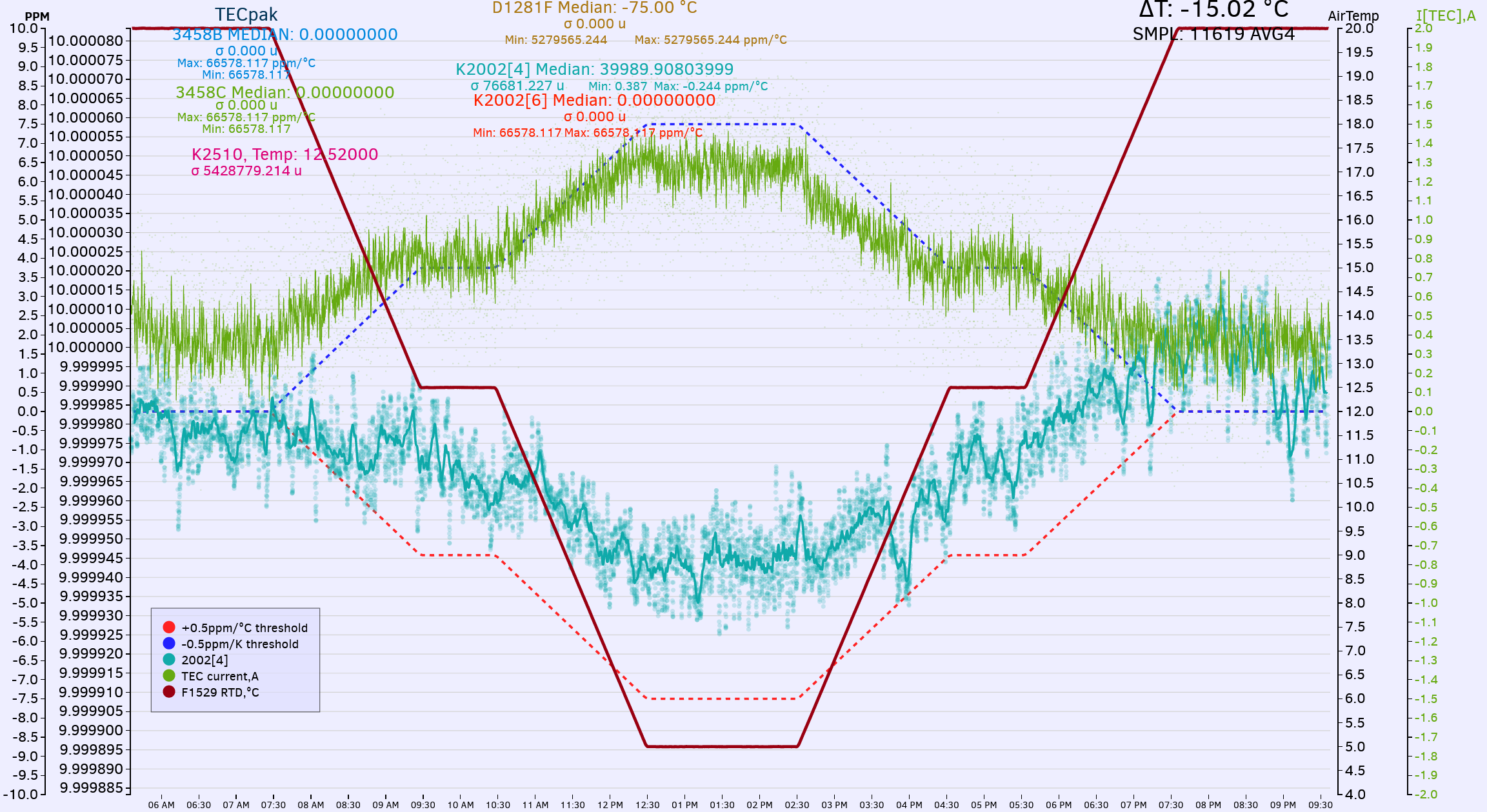Smaller DUT thermal chamber that we build before works great for component level thermal stability evaluations, but not helpful if device size is larger or have active dissipation, such as voltage reference assembly or low resistance standards that may dissipate significant power under test. To address these aspects we need larger chamber with forced airflow to reduce gradients and mix air for uniform thermal performance.
Design and initial prototype
Thermal actuator assembly, using 40W single-stage TEC element, closed-loop watercooling pump+HX and copper heatsink as thermal load.
80×80×32 mm fan installed on thermal chamber to mix air within insulated chamber.
Components layout in the larger Styrofoam box for better thermal ambient insulation.
Device under test examples, such as Wavetek 7000 DC voltage reference and Keithley 262 + EM A10 nanovolt amplifier head setup.
Use case and testing performance of various components
Here I have used TECPak 585 to perform multiple hour sweep with slow temperature ramp. Temperature and data acquisition was controlled by xDevs.com’s teckit open-source application.
First plot shows controlled temperature ramp from +15.0 °C to +55 °C with intermediate soak time at half-scale, +35 °C. Keithley 2002 DMM was used to monitor and log Ian Johnston’s PDVS2 mini 10V voltage source placed inside TEC chamber. Voltage source was programmed for constant +10.00000 VDC output. Light thin green line is current into TEC element provided by Arroyo 585 TECpak.
Changing temperature by 40 °C allow us to evaluate temperature coefficient (stability) of PDVS2 mini with good resolution and confidence. In this case voltage dropped from 9.999994 VDC to 9.999902 VDC. By using simple box math, we can easily determine TC of the output:
TCDUT = (V+15°C – V+55°C ) / |15 °C – 55 °C| TΔ = -92 µV / 40 °C TΔ = -2.3 µV/°C
As result PDVS2mini box temperature coefficient equals -2.3 µV/°C or -0.23 ppm/°C relative to +10.00000 VDC full scale output. Very impressive result, considering size, cost and hardware inside PDVS2 mini (18-bit DAC and LM399 voltage reference).
Ramp was performed in both directions to test hysteresis effects, and data converged nicely to same values. Big drop (vertical line at 4:30 by the end of the test) is result of battery inside PDVS2 mini running out of juice.
Overall time for this ramp was 12 hours, with ramp speeds 0.125 °C/minute. Now lets zoom in and look into middle step flat section:
Temperature axis rescaled to much finer resolution here, at 0.001 °C per division. Arroyo TECPak provided nice and stable control, with variations of temperature readout less than ± 0.003 °C during step time 1 hour.
Next plot shows 2 hour step at peak +55 °C temperature. Again, no problems or overshoots, while maintaining ± 0.004 °C temperature stability.
Opposite test with going sub-ambient temperatures, with ramp from +20 °C to +5 °C during 15 hour test. This time DUT was 40 kΩ resistor measured by same Keithley 2002.
Projects like this are born from passion and a desire to share how things work. Education is the foundation of a healthy society - especially important in today's volatile world. xDevs began as a personal project notepad in Kherson, Ukraine back in 2008 and has grown with support of passionate readers just like you. There are no (and never will be) any ads, sponsors or shareholders behind xDevs.com, just a commitment to inspire and help learning. If you are in a position to help others like us, please consider supporting xDevs.com’s home-country Ukraine in its defense of freedom to speak, freedom to live in peace and freedom to choose their way. You can use official site to support Ukraine – United24 or Help99. Every cent counts.
Modified: Feb. 21, 2021, 7:07 a.m.

